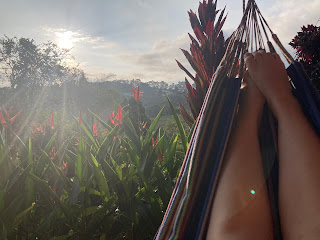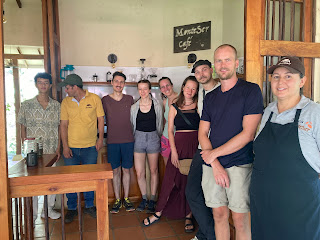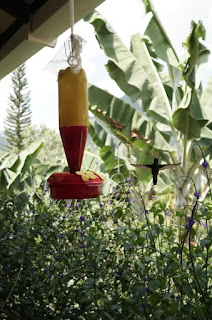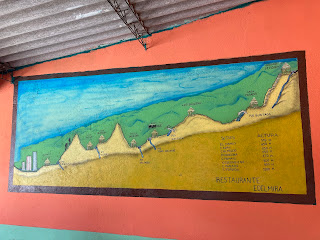Colombia Day 6: Beautiful Jardin
As usual here I am waking up around 7am. So I get up and start reading my book in a hammock. It’s such a beautiful and serene place here. Mathias & Michaela got up shortly after me and everyone was starting the the their own way. The hostel also has 3 cute dogs and a cat. Although in the night I didn’t find the dogs that cute, barking at everything. At 8 the lady from the hostel arrived to make breakfast. It was a simple, but good breakfast. Unfortunately my stomach didn’t take it so well, but I guess that’s part of traveling. Luckily I wasn’t hit too bad.
Michaela was leaving today, but Mathias & I were still considering what to do. Around 8:45 Mathias decided to wake the owner of the place to ask her about activities. She came out shortly after and while still waking up started to advise us on activities. Mathias wanted to do a coffee tour and I wanted to do a little hike. We decided to do a coffee tour in the morning and a little hike in the afternoon. The owner called 2 coffee farms in the area and one had a tour plus an English translator at 10am. While Mathias had found tours between 100-200€, this one was a mere 15 euros. So we got ready and suddenly realized we are late :-) The walk to the coffee farm was about 30 minutes and we had about 20 minutes to the start of the tour. Downhill it was quite ok, but as the sun had already started to burn down that was already quite tiring. When we had to climb a steep part back up, I was nearly dying. Just to find out Mathias had navigated wrong and we had to turn around. I’ll definitely navigate myself again in the future. When we arrived at the farm, they had just started, but the translator quickly caught us up. The group was funnily two German couples, but all of them spoke reasonably well Spanish. I could follow quite well as well, but from time to time was glad that we had the translator. Mathias was completely lost without ;-)
The farm is a reasonably small farm, about 12.000 coffee trees and roughly 4 hectares. The tour was very interesting, we learned a lot about coffee and then walked into the plantation. This farm has changed to biological growing a while ago. We also saw the sorting, washing and drying areas, however they don’t roast or grind themselves at this farm.
If you are not interested in facts about the coffee, just skip the next paragraph ;-)
Here’s what I learned:
- there are two main types of coffee. Arabica and Robusta. Columbia only grows Arabica or hybrids (80% Arabica & 20% Robusta)
- Colombia is the 3rd biggest coffee producer (after Brazil and Vietnam)
- While Robusta can handle direct sun and grows well in monoculture, that doesn’t work well for Arabica
- That’s why mass production is mainly Robusta or hybrids
- Arabica needs shade and is therefore grown next to banana, avocado, lemon or other trees (taking in these flavors as well)
- Robusta has more caffeine, Arabica has richer flavors
- There’s three key categories: conventional, exclusive and origin. Conventional is anywhere anything, exclusive is something special (to be honest I didn’t get that) and origin is one that you can only get at a special place. Like the Indonesien Kopi Luwak (where you need to have the ferret that poops out the beans) and as I’ve learned there’s also an origin coffee in Santa Marta, where I’m going next. This one is special due to the specific high altitude coffee close to the sea
- The trees live between 5-25 years, depending on the type
- New trees first grow „fake leaves“, that can’t do photosynthesis, but help to collect water. Those disappear, once the plant is big enough
- The experienced guys can see the difference between arabica & robusta beans. The Robusta has more a straight line on the bean, while the Arabica has a nice wave
- The best way to make a coffee seems to be a slow way. But to be honest I lost the conversation there a bit. Too much detail for a non coffee drinker. The only thing I remember is that one of the coolest coffee makers (chemex) was made by a German
- The fruit of the coffee tree (with the bean inside) can be yellow, green or red
- The coffee plant is a narcotic, with the flower being super strong
Ok, that’s all I remember. While the guide talked we enjoyed 2 cups of coffee (well, two quarter cups for me) and I enjoyed a lot watching the Kolibris flying around. At the end we also met the actual owners of the farm, they came over from Bogota for the Semana Santa. Live goals: own a coffee farm in Jardin and visit whenever you’d like?
After the tour Mathias and I walked into the town. We looked a bit around, there’s a cute square with bars in the center and a beautiful church. I’ve seen the two cones of the church the night before - they were light up like 2 giant Christmas trees. We found a nice lunch place and took some rest. Afterwards we decided to skip the hike, as it was already after 3pm and instead had a beer like the locals on the square. I still wanted to go to the nature reserve to watch the birds „gallitos de las rocas“. In German „Andenfelshähne“ in English „cock-of-the-rock“ - funny name for a funny bird. They seem to come to this one place every morning and evening to mate. When we were there we only saw the colorful males and the lady from the reserve explained, that the females only come in the mornings. Evenings are pure alpha male behavior. I enjoyed watching these funny birds and after a while we made the walk back to our hostel. At least we were already at the right side of the town, but it was still a good 30 minutes uphill walk.
Back at the hostel we made dinner (eggs with eggs for Mathias, 3 minute Ramen noodle soup for me) and enjoyed a beer. A French couple joined and it was another relaxed evening with some good company, writing my blog and reading my book. Unfortunately I’ll need to leave this beautiful place tomorrow again.





























Comments